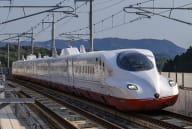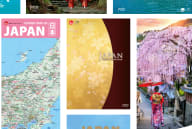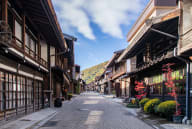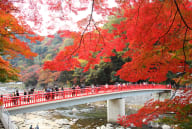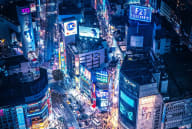
Before reading this, I want to warn you that I am not your typical tourist to Japan. While I have visited many of the country’s must-see attractions and cities, the main reason I’ve returned to Japan eight times is to explore its vast rail network.
In essence, I am a train geek. By sharing my passion for Japan’s railways with you through my own travel experiences, I hope to encourage you to include many of these distinctive trains and routes in your next visit to Japan, a number of which are included in the Japan Rail Pass.
HEADING TO THE EAST OF TOKYO FOR THE FIRST TIME


During my most recent trip in 2019, I was on a mission to journey on some of my favorite lines and experience new railways.
The Tohoku Shinkansen, stretching from Tokyo Station to the Aomori City in northeast Honshu, was my first journey. As the longest of Japan’s ten different Shinkansen lines, the Tohoku Shinkansen also boasts some of the fastest trains on the network – including the beautifully designed E5 series trainsets whose “tokiwa" green and white livery sparked my curiosity. The question was where to go?
THE WINNING DESTINATION ON THE TOHOKU SHINKANSEN
A social media vote among my Japanese friends led me to Sendai – the Tohoku region’s largest city. My tour of the Tohoku Shinkansen would become a day trip with the starting point at Ueno Station in Tokyo.
Ueno Station, which is the second stop east of Tokyo Station, is the only underground stop on the entire Shinkansen network. Serving 6 Shinkansen lines, a variety of highspeed trains call at this station making it a paradise for highspeed rail fans. At platform level, watching a parade of trains enter the station and depart into the darkness of the tunnel, I eagerly awaited the arrival of a train I had waited for eight years to ride on!
THE TRAIN I WASN’T EXPECTING ON PLATFORM 20
At around 6:30am, I felt a mild blast of wind being pushed from the tunnel, triggering my excitement for the arrival of my train. I would soon be able to bless the Tohoku Shinkansen’s
E5 series trains that I had longed to ride. The headlights of train quickly appeared and I was surprised! Instead of being greeted by a newer train sporting a tokiwa green livery, I locked my eyes at the sight of a trainset featuring a white upper body and a purple lower body divided by a pink stripe. My ride to Sendai would be aboard the oldest and distinguished train of the Tohoku Shinkansen’s fleet – the E2 series!


Built in 1997 at the time of the Winter Olympics in Nagano, the E2 series trains are capable of a maximum speed of 275km/h. Despite the unexpected surprise, I fell in love with this train! Gliding out of Ueno station and emerging from the tunnel into an early morning sunrise, the train quickly ascends onto an elevated guideway giving a nice view over the rooftops of residential and commercial spaces, separated from the maze of local railway lines below.
Ten minutes into the ride and tucking into my ekiben (lunch box) purchased at Ueno Station, we arrived at the next station – Omiya, in the Saitama prefecture. Here a few Shinkansen lines diverge and from Omiya.
ENTERING THE RACETRACK
Departing Omiya Station, The E2 series Shinkansen entered the core section of the Tohoku Line and began accelerating to its top speed of 275km/h. Not quite the blinding 320km/h I expected to experience on E5 series Shinkansen, but the motor vibration of E2 series lulled me into state of calm as the world whizzed past. Much of the Tohoku Shinkansen is a built upon an elevated guideway, providing a great view of the landscape below. The tracks of Tohoku Shinkansen are generally straight, which means the train is able maintain its top speed.

For the one hour forty-minute journey, the train flies over the landscape below, speeds through tunnels, and roars non-stop through stations as though everything is outside the train is at a standstill. It’s a rush of energy that is difficult to express in words. Being a Canadian used to train travel at less than 150km/h, this was quite an incredible run for me. However, I still yearned to experience highspeed rail travel at 320km/h. The return trip would have to wait until after my tour of Sendai – but would I actually explore the city of Sendai, or follow my railfan heart and take the next train back to Tokyo?
Written by Ken Fernandes (@japanesetrainandtravelwithken)
The opinions expressed in the above article do not reflect the views of JNTO. All content and images are property of the writer unless otherwise specified.
If you would like to submit an article to our Travellers' Blog, click here.


























































